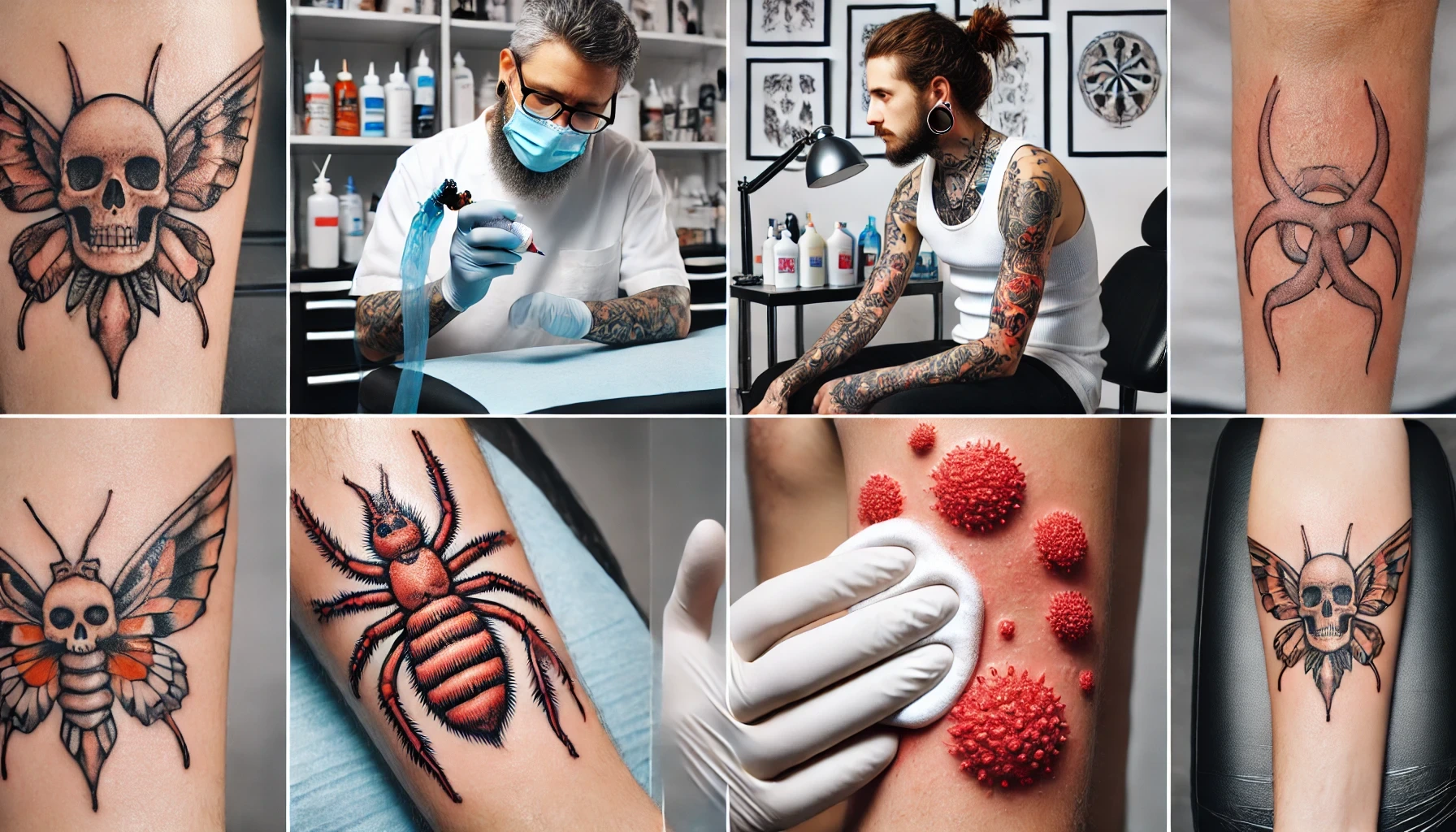Tattoos have become an integral part of self-expression, with millions of people worldwide choosing to ink their skin. However, while most tattoos heal without issues, some individuals experience adverse reactions, commonly referred to as tattoo sickness. This condition can range from mild discomfort to severe health complications, making it essential to understand its causes, symptoms, and preventive measures.
What is Tattoo Sickness?
Tattoo sickness is a term used to describe various negative reactions that occur after getting a tattoo. These reactions may stem from an immune response to the ink, an allergic reaction, or an infection. While some symptoms are mild and temporary, others require medical attention to prevent serious complications.
Causes of Tattoo Sickness
Several factors contribute to tattoo sickness, and understanding them can help in prevention and proper treatment.
1. Allergic Reactions
Certain tattoo inks contain substances that can trigger an allergic reaction. Red ink, for example, is known to cause the most allergic reactions due to its mercury content. Symptoms include itching, swelling, and rashes that appear days or even weeks after getting tattooed.
2. Ink Contamination
Poor-quality or contaminated ink can introduce harmful bacteria and chemicals into the skin, leading to infections. Unsanitary tattooing practices increase the risk of bacterial infections, which can cause severe illness.
3. Weakened Immune System
Individuals with weak immune systems are more prone to tattoo sickness. The body perceives tattoo ink as a foreign substance and may react aggressively, causing prolonged inflammation, fever, or flu-like symptoms.
4. Infection Due to Poor Aftercare
Failing to follow proper aftercare instructions can expose the tattoo to bacteria, leading to infections. Open wounds, such as fresh tattoos, are particularly vulnerable to bacterial contamination if not cared for properly.
5. Heavy Metal Exposure
Tattoo inks often contain metals like lead, nickel, and cadmium. These substances can be toxic and lead to skin reactions or systemic health issues if absorbed in large amounts.
Symptoms of Tattoo Sickness
Tattoo sickness manifests through various symptoms, ranging from mild discomfort to severe health concerns. Recognizing these symptoms early can help prevent complications.
Mild Symptoms:
- Redness and swelling around the tattoo
- Itching or slight irritation
- Small rashes or bumps
- Slight fever or fatigue
Moderate Symptoms:
- Persistent pain in the tattooed area
- Oozing or pus formation
- Widespread skin irritation or hives
- Enlarged lymph nodes
Severe Symptoms:
- High fever and chills
- Intense pain and swelling beyond the tattooed area
- Difficulty breathing (in case of a severe allergic reaction)
- Skin peeling or ulceration
If any of these symptoms worsen or persist, seeking medical attention is crucial.
Preventing Tattoo Sickness
Taking preventive measures can significantly reduce the risk of tattoo sickness. Here’s how you can ensure a safe tattooing experience:
1. Choose a Reputable Tattoo Artist
Always research the tattoo studio and artist before getting inked. A professional artist will follow hygiene protocols, use sterilized equipment, and use high-quality inks.
2. Verify Ink Ingredients
Ask your tattoo artist about the ink being used. Opt for inks that are organic or free from harmful heavy metals and allergens.
3. Follow Proper Aftercare
Caring for a new tattoo is crucial for proper healing. Follow these aftercare steps:
- Keep the tattoo clean by washing it with mild soap and lukewarm water.
- Apply a recommended tattoo ointment to keep the area moisturized.
- Avoid direct sunlight and swimming until the tattoo fully heals.
4. Boost Your Immune System
A strong immune system can help fight off infections. Eating a balanced diet, staying hydrated, and getting enough rest before getting a tattoo can aid in a smooth healing process.
Treatment for Tattoo Sickness
If tattoo sickness occurs, several treatments can help alleviate symptoms and promote healing.
Home Remedies:
- Cold Compress: Reduces swelling and discomfort.
- Antihistamines: Help control allergic reactions and itching.
- Aloe Vera Gel: Soothes irritated skin and speeds up healing.
Medical Treatments:
- Antibiotics: Prescribed for bacterial infections to prevent further complications.
- Steroid Creams: Used for severe allergic reactions to reduce inflammation.
- Pain Relievers: Over-the-counter medications like ibuprofen can help reduce pain and swelling.
Final Thoughts on Tattoo Sickness
Tattoo sickness is a concerning yet preventable issue. By selecting a reputable tattoo artist, verifying ink quality, following proper aftercare, and recognizing early symptoms, individuals can enjoy their tattoos without complications. If symptoms persist or worsen, seeking medical attention is crucial to prevent severe health problems. Prioritizing safety and hygiene ensures a smooth and enjoyable tattoo experience.
